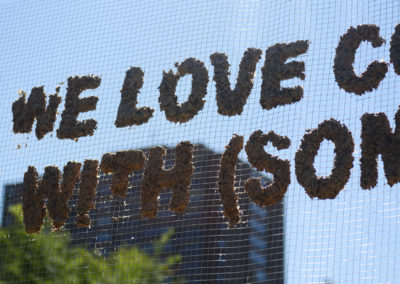
CAFKA BIENNIAL: WHAT WE DO TOGETHER THAT WE CAN’T DO ALONE
KITCHENER, CANADA | 2016
To the Synanthropes is a multi-faceted project created for the CAFKA.16 biennial about urban human relationships with synanthropes. Synanthropes are species that thrive within human-modified environments and are therefore ecologically associated with humans. Well known synanthropes include rats, mice, pigeons, seagulls, raccoons, squirrels etc. Though often considered pests, synanthropes proliferate exactly because of human action in urban ecologies. While we may say one thing culturally about these creatures, it is our material complicities with these species that allow them to thrive.
This project worked with the general public to explore and question perceptions of these prolific creatures and their place in the city. The aim was to play with popular ideas about wildlife, wildness and what counts as natural, in a humorous but critical way and explore how idyllic ideas about nature breakdown in the face of the opportunistic creatures that exploit what they find in our cities.
Performative public surveys filled out during conversations with city residents collected over a hundred letters to the synanthropes of Kitchener-Waterloo. These letters were distilled into a series of public installations that communicated these sentiments back to the species named in the letters, using the materials and sites which are already shaping human-synanthrope interactions in the city. These installations were designed for both humans and animals, though not always with the same message, with text often contradicting the material possibilities offered to the animals interacting with (and often eating) the work.
The project playfully pushes back against notions of the city as “our” territory and instead reveals the many ways we play host to synanthropes through the material conditions we create around us which allow them to proliferate and thrive. To the Synanthropes reframes popular ideas about nature and the contradictions held within those ideas and instead suggests a view of the city as an urban ecology, filled with beings with which we are deeply entangled and ultimately responsible for.







